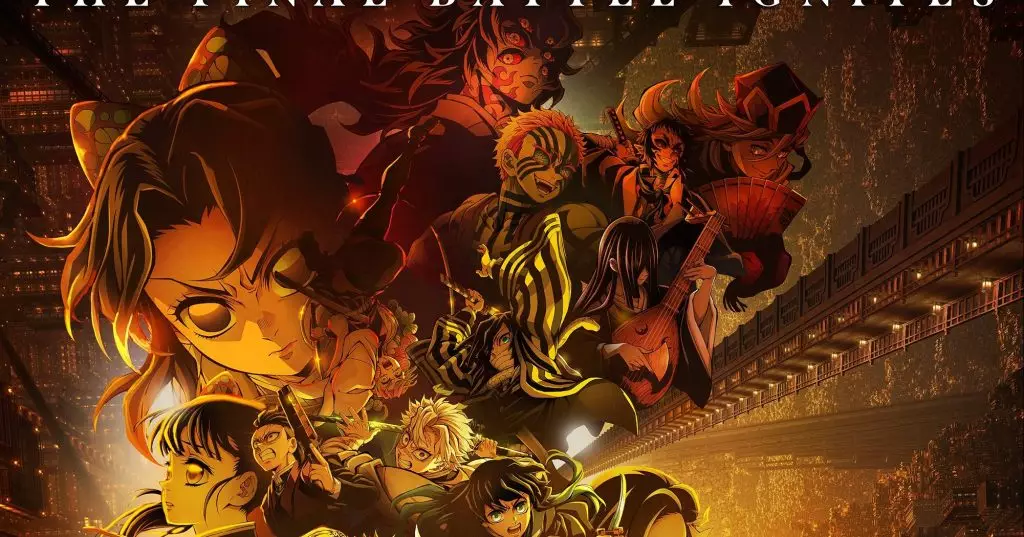In an era where Hollywood blockbusters have often monopolized the box office, the recent surge of anime films demonstrates an intriguing shift in audience preferences. While the September box office landscape may lack the blockbuster grandeur of last year’s spectaculars like Warner Bros’ Beetlejuice, the emerging strength of anime titles, particularly Demon Slayer: Infinity Castle, signals a profound transformation. What Hollywood has begun to realize is that the dedicated anime fanbase acts as a resilient, early-adopting core market, often outperforming expectations with fervent anticipation and unwavering loyalty. Unlike the fleeting appeal of big-budget tentpoles, anime films cultivate a narrow yet intensely devoted audience that shows up early, fills theaters quickly, and often signals a broader cultural shift towards localized, franchise-driven content with international appeal.
Fan Loyalty and Pre-Sales as Indicators of Future Success
The soaring pre-sale figures for Demon Slayer: Infinity Castle underscore the demographics of an engaged, almost fanatic, audience prepared to invest heavily from the moment tickets go live. The film’s estimated $10 million in pre-sales across major theater chains and record-breaking presales on platforms like Fandango are not mere numbers—they embody a cultural phenomenon. This rabid enthusiasm seems to reflect a broader trend: that anime movies, especially those rooted in ongoing series or manga, are no longer niche for a select few but have escalated into major global events comparable to mainstream Hollywood releases. Yet, it’s important to recognize that these early surges are often frontloaded, with most of the audience turnout concentrated in the initial days. The phenomenon isn’t just about the film’s quality but about the strength of the existing franchise, which guarantees a substantial opening but can also lead to a precipitous drop-off afterward.
Market Performance and International Ascendancy
Internationally, Demon Slayer: Infinity Castle has shattered records with nearly $193 million at the global box office, primarily driven by Japan, which accounts for 75% of that total. Its exceptional debut across Southeast Asian markets, surpassing benchmarks set by previous anime hits such as Mugen Train and even global giants like Frozen II, highlights the entrenched popularity of the franchise and the genre’s growing economic impact. The opening in multiple Asian markets, often with shows of over $17 million, reinforces the message that anime’s appeal is no longer confined within Japan but has become a formidable force in global entertainment. Such lucrative international performances suggest that the genre’s expansion is sustainable, fueled by a dedicated fanbase that traverses language and cultural barriers, with local theaters adapting to meet the soaring demand with foreign-language screenings and subtitles.
Fan Dynamics and Market Longevity
A critical, often overlooked reality about anime films is their inherently frontloaded revenue pattern. From Jujutsu Kaisen 0 to Mugen Train, the initial weekend audience footfall dwarfs later box office figures, with subsequent runs seeing dramatic decline. The loyal core audiences—intense fans of series like Demon Slayer—are quick to fill the theaters initially, yet their numbers diminish rapidly in subsequent weeks. This characteristic forecasts a bowling-ball effect for Infinity Castle; expect massive opening figures with a steep decline afterwards. This dynamic should not diminish the significance of these films but rather redefine their commercial lifecycle, challenging traditional Hollywood notions of sustainability and encouraging studios to consider expansion into ancillary markets like streaming and merchandise as vital components of their revenue strategies.
Implications for Hollywood and Future Content Strategy
The rise of anime as a dominant box office force raises critical questions for Hollywood executives. Clearly, the traditional model of blockbuster dominance—built on massive marketing budgets and wide-audience appeal—may be less effective in a landscape where niche franchises can deliver outsized returns through dedicated fans. Hollywood could learn from anime’s ability to cultivate loyalty, deepen engagement via serialized content, and leverage international markets for sustained revenue. Moreover, the success of films like Infinity Castle underscores the importance of focusing on franchise continuity, high-quality adaptation, and respecting audience expectations—elements that anime consistently delivers. Ignoring this shift risks Hollywood falling further behind in an entertainment ecosystem that increasingly values authenticity, cultural specificity, and franchise depth over superficial spectacle.
The growing prominence of anime provides a compelling blueprint: niche content, when executed with passion and precision, can transcend cultural boundaries, command substantial international markets, and redefine industry benchmarks. Hollywood’s challenge is to adapt, innovate, and recognize that the future belongs not just to the spectacle but to the connection viewers feel with the stories they cherish.

